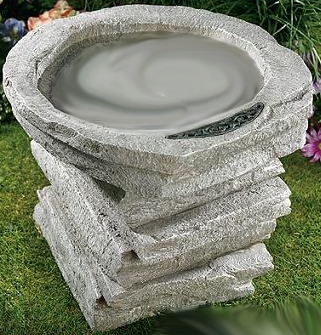I'm not sure how best to set up the meeting with the Dwarves. Could really use some good ideas here. Doing it all through written material seems flat but so far I have not come up with any better ideas.
The dwarves will trade either the stones for the fonts or the metal for the Heart for an alchemical compound they need.
To make what they need the players will likely have to perform this experiment:
Red Cabbage Experiment |
| Red cabbage contains a
pigment molecule called flavin (an anthocyanin). This water-soluble
pigment is also found in apple skin, plums, poppies, cornflowers, and
grapes. Very acidic solutions will turn anthocyanin a red color. Neutral
solutions result in a purplish color. Basic solutions appear in
greenish-yellow. Therefore, it is possible to determine the pH of a
solution based on the color it turns the anthocyanin pigments in red
cabbage juice.
The color of the juice changes in response to changes in its hydrogen ion concentration. pH is the -log[H+]. Acids will donate hydrogen ions in an aqueous solution and have a low pH (pH < 7). Bases accept hydrogen ions and have a high pH (pH > 7). Here is a table of approximate colors of red cabbage indicator solution at different pH's. If you wish, make your own chart, using chemicals of known pH.
Materials
Procedure
Notes This demo uses acids and bases, so please make certain to use safety goggles and gloves, particularly when handling strong acids (HCl) and strong bases (NaOH or KOH). Chemicals used in this demo may be safely washed down the drain with water. A neutralization experiment could be performed using cabbage juice indicator. First add an acidic solution such as vinegar or lemon juice until a reddish color is obtained. Then add baking soda or antacids to return the pH towards a neutral 7. You can make your own pH paper strips using red cabbage indicator. Take filter paper (or coffee filter) and soak it in a concentrated red cabbage juice solution. After a few hours, remove the paper and allow it to dry (hang it by a clothespin or string). Cut the filter into strips and use them to test the pH of various solutions. |
The items to test can be gotten from the Trader/Peddler. The cabbage can be gotten from the spirit realm and brought to the real world with the use of a new formula for the Alchemy shop, Corporeal Soot.
Quick Grow Crystals
| ||||||||||
Heated bubble Experiment
|
Idea for font:
 If
I can find a flat birdbath then we could stack flag stones to raise it up.
If
I can find a flat birdbath then we could stack flag stones to raise it up.